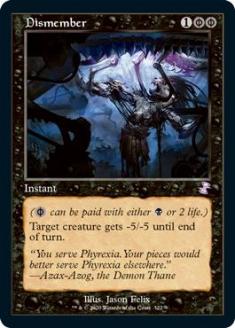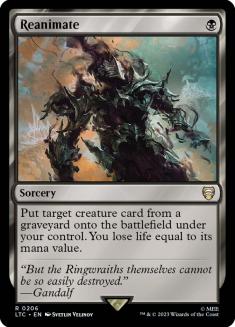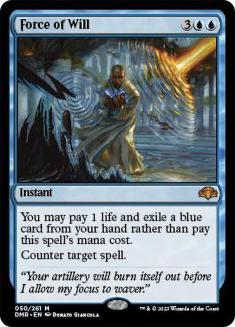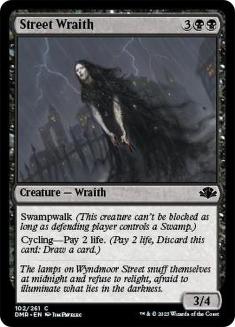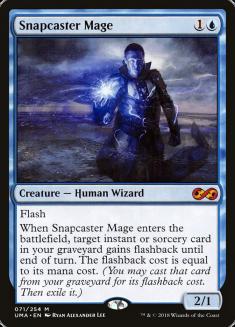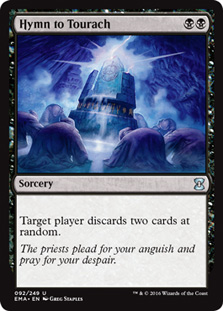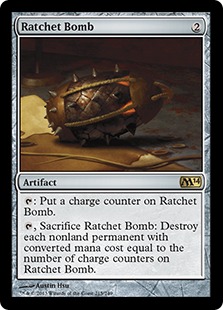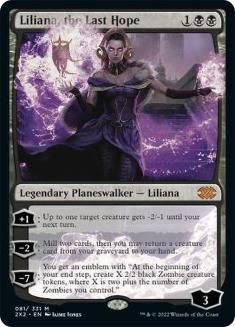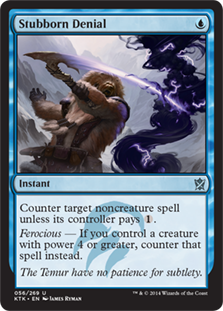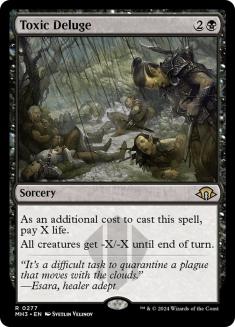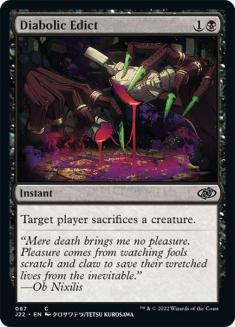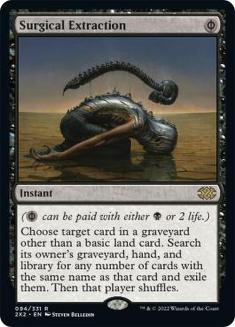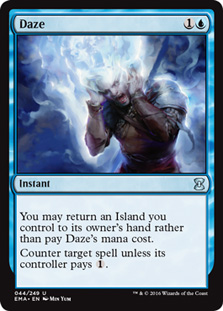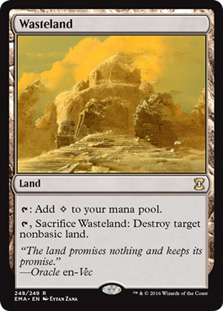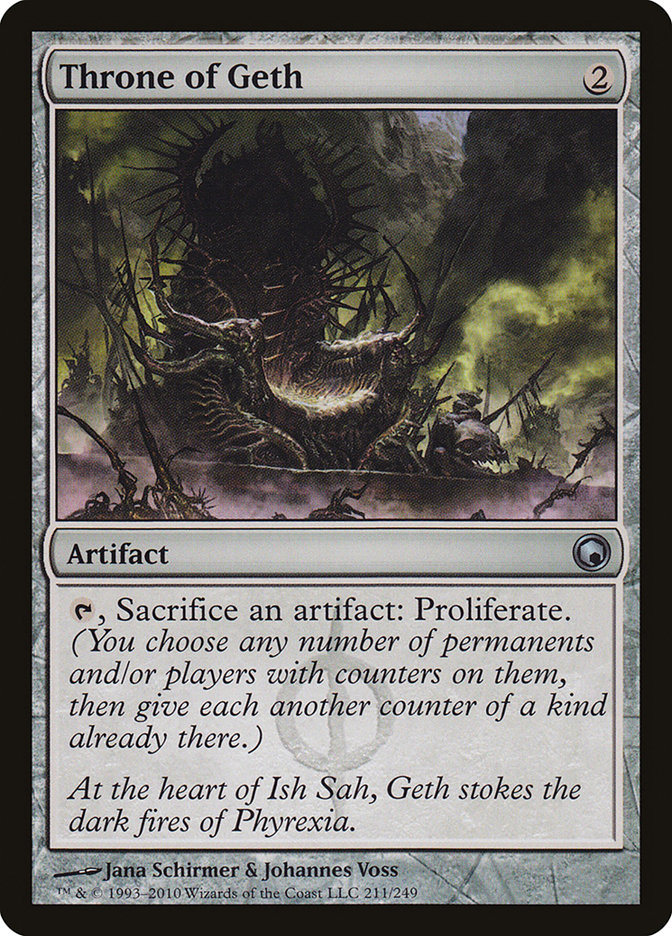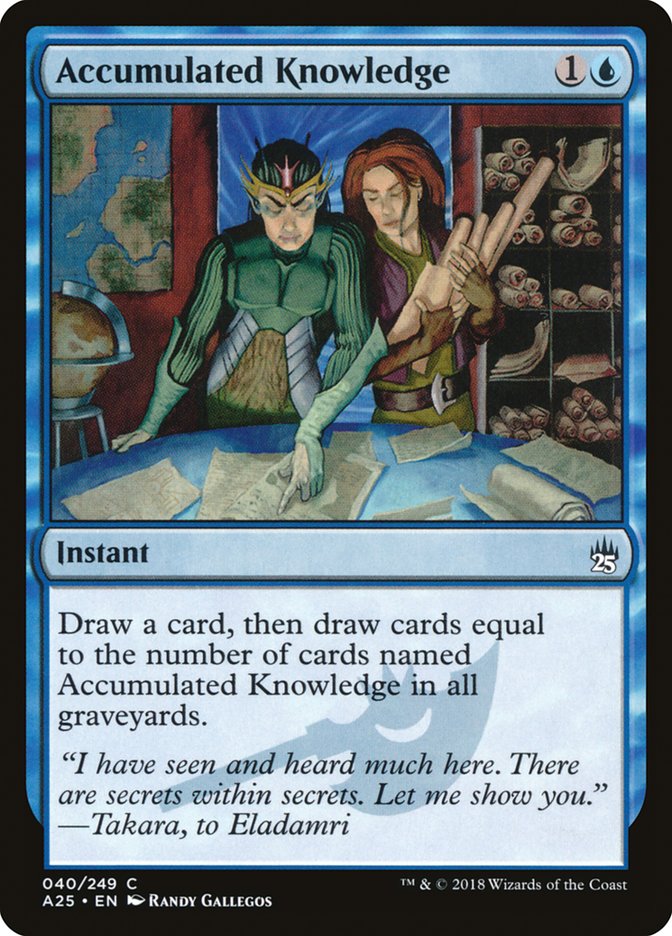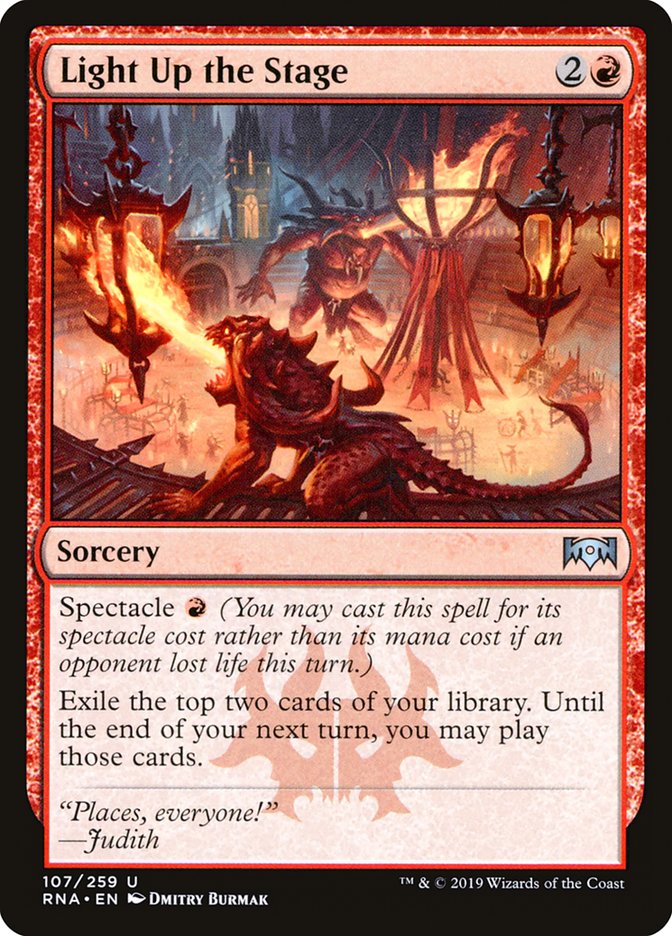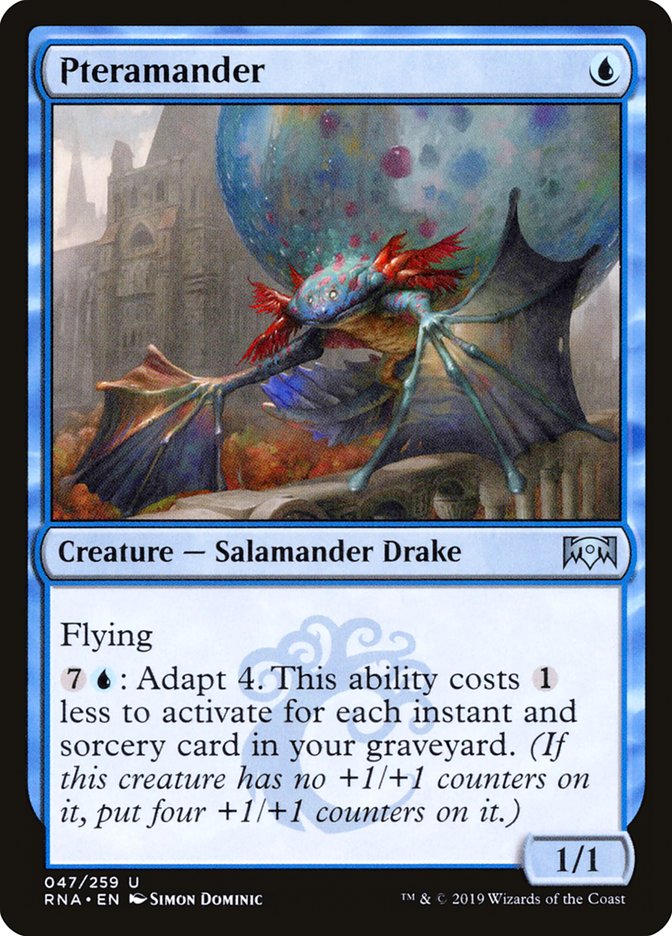They say a picture is worth a thousand words. How about a Twitter embed with a GIF?
— Ben Friedman (@40cardfriedman) February 17, 2019
Now, don’t get me wrong. Ari is my colleague here at Star City Games and we have plenty of camaraderie. We tested in the same group for the recent Mythic Championship, both went 11-5 with Sultai Midrange, and dined together on excessive amounts of grilled cheese this weekend. But ol’ Arnie must be out of his damn mind if he’s trashing Brainstorm.
Let’s recap some of the main conclusions of my last Legacy article in the wake of SCG Baltimore, the Team Constructed Open, and the Legacy Classic.
Dimir Death’s Shadow is an incredible deck, but Delver of Secrets does not belong anywhere near it. I still stand by this statement. Delver of Secrets is best with the reach provided by Lightning Bolt, or to provide a bit of early pressure that prompts the opponent to begin acting, thus unlocking your Dazes and Spell Pierces to be effective.
Death’s Shadow needs neither the light pressure of an early Delver nor a way to chip shot in damage prior to ending the game with a pair of Lightning Bolts. It just doesn’t fit in with the gameplan. Death’s Shadow is just a way, way better Grixis Control deck with the ability to actually close out the game.
See, it works like this. Grixis Control wants to trade off resources like cards in hand and creatures on the battlefield and eventually take over the game after a chain of interactive two-for-ones. The hope is that eventually a Jace, the Mind Sculptor will close the game out despite the powerful engines or heavy-hitting topdecks of other Legacy strategies.
In contrast, Delver decks want to temporarily pin their opponents on one resource axis, buying just enough time to finish the game with whichever threat they have found with their copious cantrips. Hymn to Tourach is a Grixis Control card; Spell Pierce and Stifle are Delver cards.
Death’s Shadow is just looking to trade off resources and win the game in a short timeframe after a flurry of tempo-negative discard and Dazes by sticking a 5/5 or larger threat for a single mana.
The plan of hitting an opponent for half of their life total, trading resources, and then deploying a big threat to actually finish the job in one or two turns is substantially worse than just trading the resources even more effectively and deploying the big threat to finish the job in two or three turns.
To trade resources more effectively, you need more virtual copies of your best spells, which means you need the Snapcaster effect. Unfortunately, Snapcaster Mage with Hymn to Tourach is too expensive, but Jace, Vryn’s Prodigy offers the same flexibility with a two-turn mana investment.
I still recommend my original list from the Baltimore Classic:
Creatures (12)
Planeswalkers (1)
Lands (17)
Spells (30)

Sideboarding
VS Miracles
Out:
In:
You keep a Dismember in for Monastery Mentor. It might be okay to keep in a second. Ratchet Bomb is a protective preemptive answer to Counterbalance, and Liliana, the Last Hope forces them to have a Council’s Judgment or lose to the emblem. A Surgical Extraction or two wouldn’t be completely out of place, as stripping the opponent of their Jaces, Brainstorms, Swords to Plowshares, or Accumulated Knowledges might be a worthwhile way to steal a game.
This is the most flexible matchup for sideboarding, and in all honesty, you have three more potential slots to sideboard in by cutting more Street Wraiths. Try a couple of different plans and see what cards are surprisingly effective or ineffective.
You can also shave a Wasteland if you see your opponent playing around it by fetching almost all basic lands.
VS Grixis Control
Out:
In:
Two Dismembers stay in to fight enemy Gurmag Anglers, one of the few ways an opponent can cut down a resolved Liliana, the Last Hope.
VS Grixis Delver
Out:
In:
You can cut Daze on the draw and keep in a mixture of Force of Will and Stubborn Denial.
VS Colorless Eldrazi
Out:
In:
VS Golgari Depths
Out:
In:
Liliana is an answer to their Dark Confidants, Sylvan Safekeepers, Bitterblossoms, and Vampire Hexmages. You can bring in a couple of Surgical Extractions, but often they will diversify their threat base post-sideboard. If they present a number of Life from the Loams, your Hymn to Tourachs become terrible and you will need some Surgicals instead. Hymn is worse when your opponent goes first, of course, and can be shaved down to two when you’re on the draw. A Dismember or two are very trimmable.
VS Storm
Out:
In:
Great matchup. Don’t get caught with your pants down against Empty the Warrens; bring in those Ratchet Bombs and embarrass them if they try for it. The matchup is so favorable you can afford a sometimes dead card in your hand to hedge against one particular plan.
VS Sneak and Show
Out:
In:
We play Diabolic Edict over Surgical Extraction here because some opponents have Arcane Artisan to catch, and that plus sometimes hitting a naked Emrakul, the Aeons Torn is more valuable than Surgical Extraction.
VS Lands
Out:
In:
Ratchet Bomb hits Exploration, Molten Vortex, or Mox Diamond. Sometimes opponents have weird stuff like Choke or Sylvan Library, which are both well worth covering.
VS Death and Taxes
Out:
In:
VS Reanimator
Out:
In:
VS Mono-Red Prison
Out:
In:
You can cut a Street Wraith instead of a Wasteland, but Wasteland isn’t great because of how easy it is for them to run perfectly off only black mana. Either choice is fine.
***
Ari eventually claimed that Death’s Shadow was not a traditional blue deck, but I suspect he was trying to cover his tracks after making a claim that doesn’t quite pan out for every example. Of course, Death’s Shadow is the true scion of the school of Grixis Control, Shardless Sultai, Sultai Delver, and even various StoneBlade shells of bygone years. It’s bigger than traditional Delver decks, ready to trade resources and close out the game once enough resource exchange has occurred and has a sideboard that covers all the popular foes.
You have a free 15% of the metagame covered with your heavily favored matchups against Storm and Sneak and Show; your pack of Lilianas and Jace, Vryn’s Prodigies embarrass the Baleful Strixes of Grixis Control; and you’re a classic coin flip against several of the other fair decks of the format.
Do not, under any circumstances, ever place Throne of Geth in your Death’s Shadow deck. It doesn’t cover Mox Diamond, Death and Taxes, Elves, True-Name Nemesis, or several other narrow use cases. Don’t do it. Ever.
But if you’re interested in playing something other than Dimir Death’s Shadow, there are a number of other archetypes and innovations that merit consideration.
First and foremost, Miracles is simply a better choice than Grixis Control. It locks out the game more effectively, draws more cards, gets mana screwed less frequently, and covers more bases with more universal answers. The Accumulated Knowledge builds are likely more mature choices than the Predict versions.
Second, Light Up the Stage and Pteramander are still powerful effects that merit testing and spots in Legacy decks, but likely need to include discard to maintain a passable combo matchup while also adding synergy with Light Up the Stage (synergy that does not exist with countermagic like Daze and Force of Will).
And of course, Arclight Phoenix is the next card to break in the format, if one is to arise. Buried Alive and Arclight Phoenix offer a powerful nut draw, and a shell with sufficient card selection and discard for protection will likely become a perennial part of the Legacy metagame. If you have a version of this deck that you enjoy, it may be worth trying at a large tournament to see if it’s truly broken. I expect to see someone make Top 8 at the Syracuse Open with an Arclight Phoenix deck and foil copies of both Phoenix and Buried Alive to randomly spike in price.
Creatures (9)
Lands (16)
Spells (35)

The only reason why I don’t recommend one of these unproven shells for players who need a quick answer to the question “What do I play this weekend to give me my best shot of hoisting the trophy?” is because the Legacy metagame is generally rather slow to evolve, and the same principles that led to the genesis of Delverless Death’s Shadow three months ago are still relevant and valid for today’s Legacy tournaments.
Blue decks aren’t dead. It’s just that without week-in, week-out tournaments like we had between 2009 and 2015, there are fewer incentives and fewer opportunities for experienced tournament players to farm the non-Brainstormers for wins. The pace of deck perfection has slowed considerably, and with some of the traditional best friends of Brainstorm being hit with various bans, the other decks have inched up in metagame share. In a more active metagame, the blue players would innovate and advance back to a dominant role in the format, but the sluggish pace of the format means that a lot more players are registering subpar or high-variance non-Brainstorm decks.
You don’t even have to stick to a rigid preconceived shell for your Brainstorm decks. Decks as disparate and unexpected as Dimir Ninjas, Azorius Delver-Blade, and Grixis Phoenix have all seen some level of success in the past few weeks. Just recognize the major enemies, have plans against all of them, and pack countermeasures for the most common ways they stop you from playing your game. Let the natural consistency edge provided by the best card in the format do the rest of your work for you.




